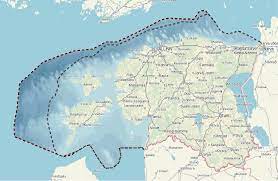According to Saare , an energy company developing a worth 1.7 billion euros on the southwestern coast of Saaremaa island, Estonia needs large-scale renewable energy capacities as soon as possible, adding that offshore are realistic solutions to that.
According to the company, the currently pending projects — the Gulf of Riga offshore of Saare and Eesti Energia — could be operational no earlier than in 2028, and the possible Elwind offshore after 2030.
“It is important to realize that the construction of offshore in Europe has already become a regular everyday activity using advanced technology. The solutions used are, of course, evolving, but with the logic and speed of technological and economic development,” Kuido Kartau, member of the management board of Saare , said in a letter sent to the Ministry of Finance.
According to him, this means that, for example, when starting to build an offshore in 2026, it may be realistic that even with the best solutions in the world, it will not be possible to build, transport and install gravitational foundations for the best wind turbines used at that time. It is also probably not optimal or realistic to install submarine cables for long kilometers in a relatively shallow sea.
“It must be acknowledged that Estonia is not able to carry out large-scale innovation in renewable energy domestically, but in essence we have to copy and simply apply the best technologies in Europe. Although based on maritime planning, further developments and decisions must be based on technological and economic realities,” Kartau said.
At the same time, Estonia’s first national maritime spatial plan has been completed. The maritime plan provides instructions on how to operate in Estonian maritime space in the next 15 years, providing a comprehensive picture of the various areas of use of the sea and providing a specific framework in terms of conditions and guidelines.
The Saare board member admitted that purely during the preparation of the plan — over a period of about 4.5 years — the importance of renewable energy has become even more important than before.
“The operative establishment of a maritime plan is undoubtedly extremely necessary for the real promotion of renewable energy production and the implementation of the green turn. In a few decades, Estonian electricity production will largely shift to offshore . In addition to developing offshore , transmission systems need to be developed accordingly,” Kartau said.
“Electricity supply at national, macroeconomic and regional levels is expected to be even more important in the future than it is today. Those successful are regions with high security of supply and affordable electricity, therefore, there is a clear advantage in the vicinity of high production capacity and high transmission capacity systems,” he added.
In the letter, Saare thanked and commended the drafters of the plan several times for the work done, and said that the company looks forward to the introduction of the plan soon, which would allow the developments to be implemented.
Opinions on the solution and impact assessment can be submitted for the Estonian maritime spatial plan until Dec. 8.
Saare has been planning a major with 100 turbines costing an estimated 1.7 billion euros on the coast of Saaremaa since 2015 and sent a request to the government at the end of 2017 to initiate a corresponding building permit procedure.
In spring 2019, based on input by the Internal Security Service, the government decided not to issue the permit due to having determined that the applicant may jeopardize public order and national security. Saare subsequently contested the decision. A compromise was reached in April 2020 on the basis of which the government’s initial decision was annulled.
In May last year, the government decided to support the launch of the building permit procedure and of an environmental impact assessment for the .
In October 2020, Dutch company Van Oord acquired a 30-percent minority stake in Saare which, according to the parties, will help expedite the development of the project.
The Ministry of the Environment has approved the environmental impact assessment (EIA) program for the offshore to be established on the western coast of the country’s large western island of Saaremaa by Estonian energy company Saare OU.
According to the environmental impact assessment program, Saare is planning to build an offshore with up to 100 turbines and a capacity of up to 1,400 MW in the territorial waters of Saaremaa’s western coast and establish a transmission system until joining the general electricity system. The diameter of one turbine’s rotor is estimated to be 250 to 280 meters and consequently, the maximum height of the turbine is 310 meters.
Saare OU is owned by Kuido Kartau with 35 percent, Veiko Vali also with 35 percent and Dutch company Van Oord Renewable Finance III B.V. with 30 percent.

